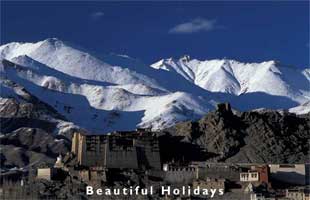The Silk Road Asia
Beautiful Asian Holidays


If you’d prefer a one or two base holiday to an overland trek, here are some ideas:
Xi’an can be combined with a trip to Beijing
Kashmir and Jammu is a very scenic part of Pakistan
Delhi is a good jumping-off point, and you can travel into the north of India from this fabulous city
Kathmandu is increasingly popular with tourists – try visiting during one of the major festivals
China is the final destination of the Silk Road. At Xi’an, you can see the famous terracotta warriors and shop in the bazaar at the end of the Silk Road. Lanzou, the ‘Golden City’ is the next major stop, a busy city with several temples and where you can enjoy the local beef soup – however, it doesn’t have as many attractions as Xi’an. At Dunhuang things pick up again, and there are caves and elaborate pagodas, and you can take a trip into the desert to see some amazing sand dunes. The road splits here, and you can either choose the northern or southern routes around the Taklimakan Desert. Either way will take you to see fascinating cities with ruins, temples and much else, although the Thousand Buddha Caves at Turpan are a highlight. The caravan routes merge again at Kashgar, where you can take a camel safari into the desert. If, however, you’re heading to India, you should take the southern route and head south at Khotan – stop off to see its bazaars and silk factories.
Nepal is one of the highlights of the Himalayas, a remote and laid back mountain kingdom that is influenced by India and China, but different from either. Visit Kathmandu, once believed to be the fabled Shangri-la, to see festivals, temples and try yoga or meditation. Unsurprisingly, Nepal is one of the world’s best destinations for hillwalking.
Bhutan is a tiny Himalayan delight. There are several sites that are of significance to Buddhists, and you can visit remote monasteries. As with Nepal, the most popular holiday activity is walking, and there are numerous trails around and across the country. Visit Thimpu to buy handicrafts and see the handful of museums.
India is a great place to experience the Himalayas – particularly the state of Jammu and Kashmir. Himchal Pradesh also has some fantastic trekking opportunities, and some fascinating cities. Shimla was popular with British colonists during the hot Indian summers – if walking is too energetic, you can see the mountains by taking the train. Nearby Dalhousie is more sedate, and is the ideal place for a chill-out holiday. Uttarakhand is the southernmost state of India where you can access the Himalayas. The Beatles visited Rishikesh when they were going through their Eastern phase, and is still popular with Westerners finding themselves. You can bathe in the Ganges and do some yoga, or try white-water rafting and numerous other more active pursuits. Delhi is sometimes thought to mark the end of the southern route.
Northern Pakistan’s Silk Road (or, its contemporary moniker of the Karakoram Highway) destinations also have some great hiking and trekking opportunities. There are several key destinations along the route. The highway passes where the Himalayas meet the Hindu Kush and Karakorum ranges. The route goes through the beautiful but disputed area of Kashmir, and along the Hunza Valley – Karimabad should definitely feature on your itinerary. Gilgit is the usual starting, or end, point – there are numerous attractions here, including mountain excursions, air safaris and paragliding. Abbottabad recently found fame the place where Osama bin Laden was killed.
The Silk Road and the Himalayas are a great cultural and adventure holiday experiences. As well as climbing mountains, you’ll be able to meet yogis, fish in mountain streams, haggle at local mountains, see remote temples, go on air safaris try all sorts of tasty and grotesque local foods, and cross paths famous figures as diverse as the Beatles, Ghandi and Osama bin Laden.
If you’re planning on taking part in adventure activities, make sure you’re insured.
